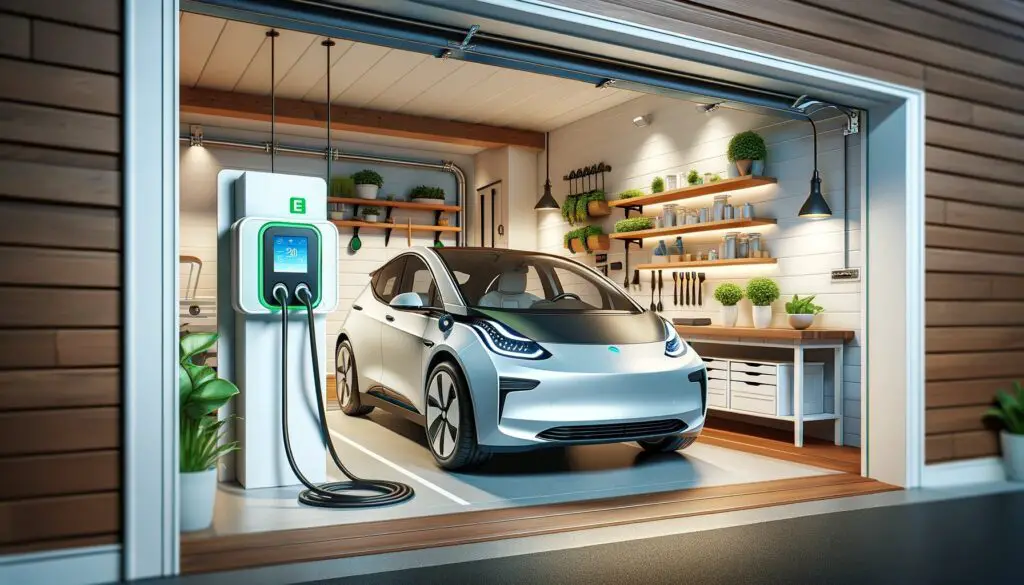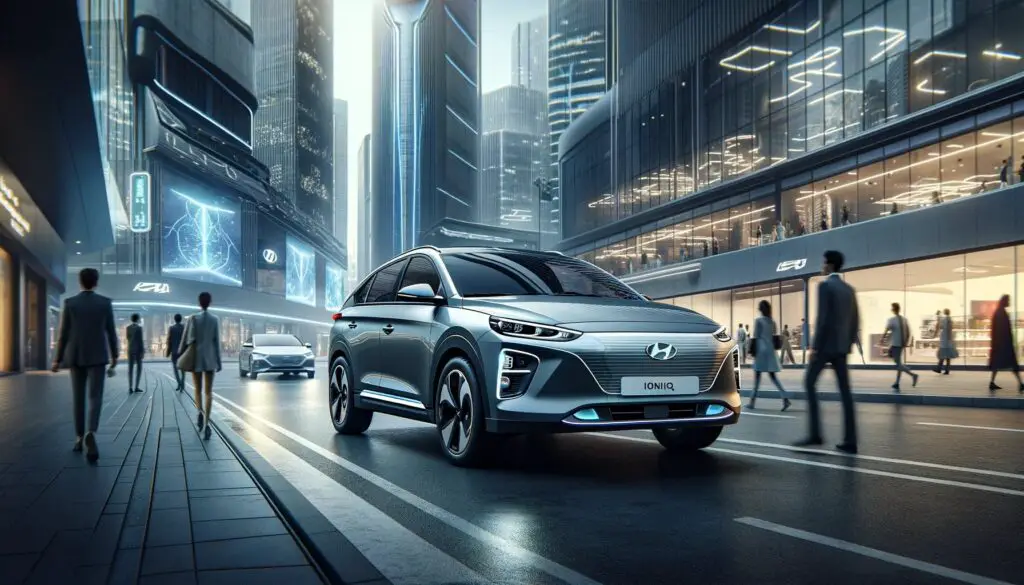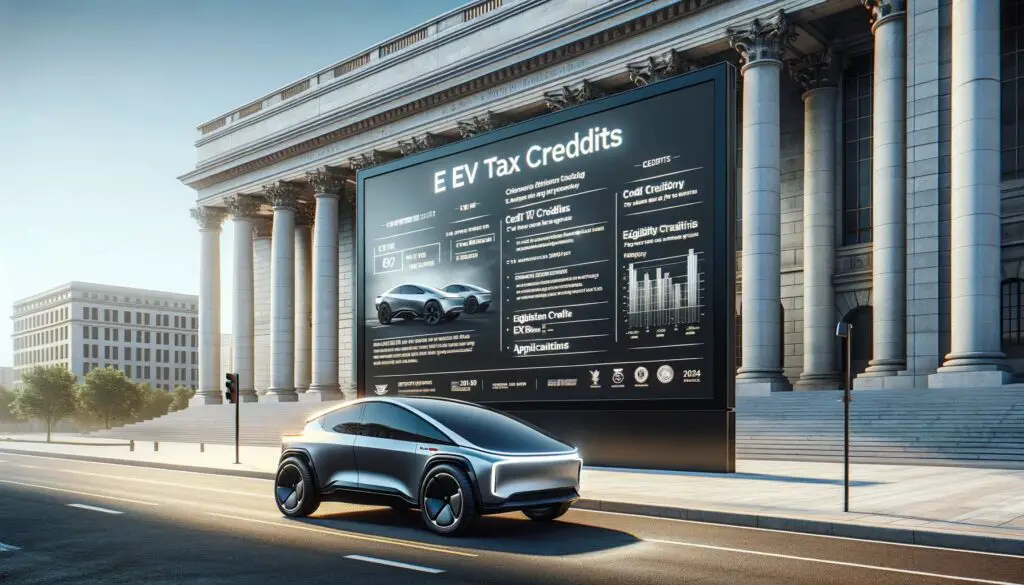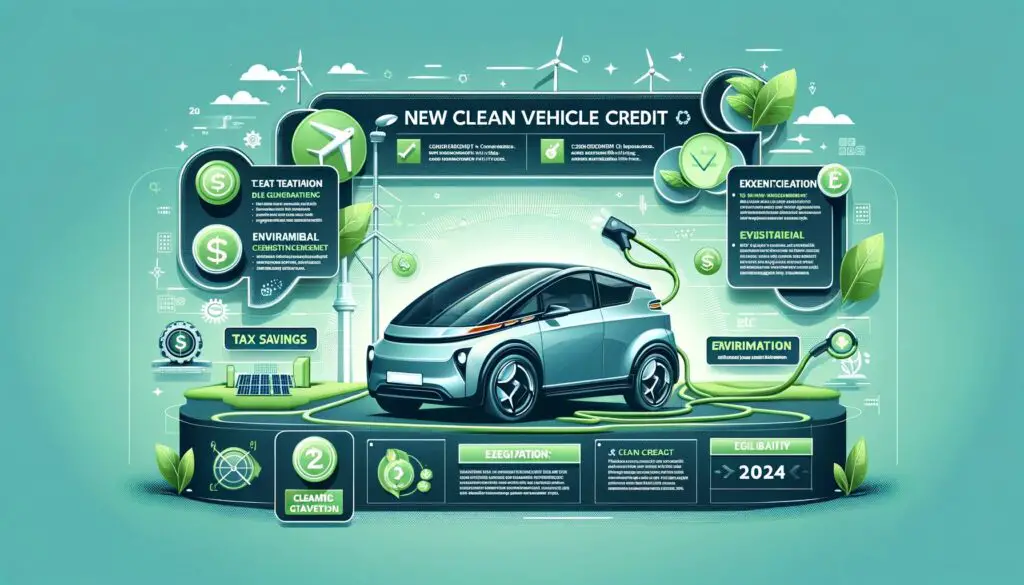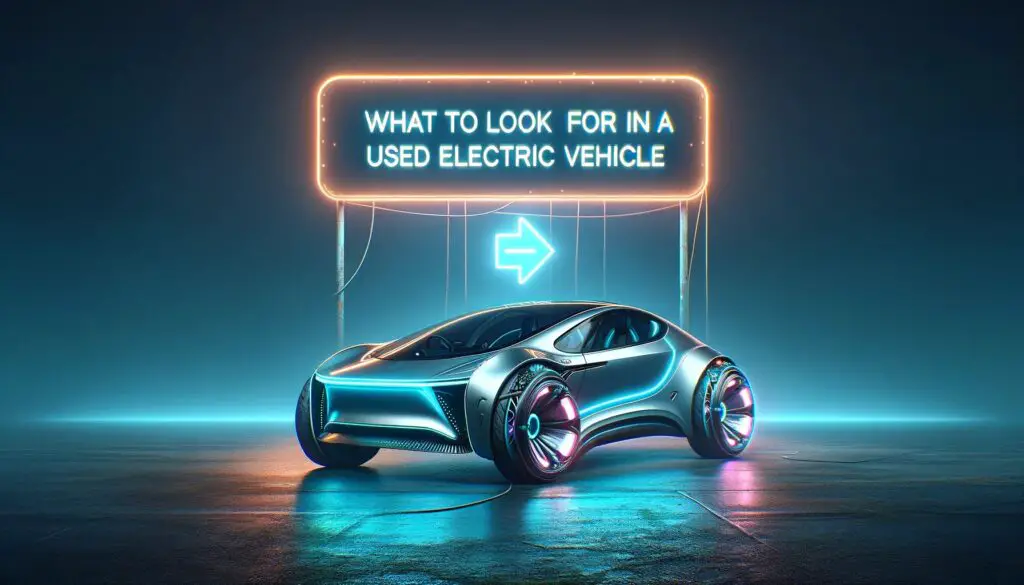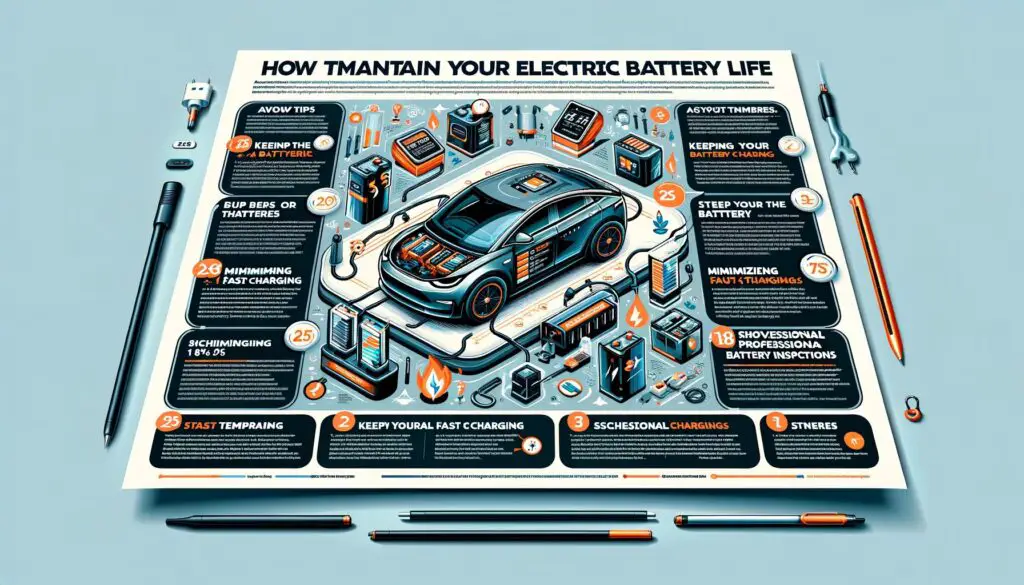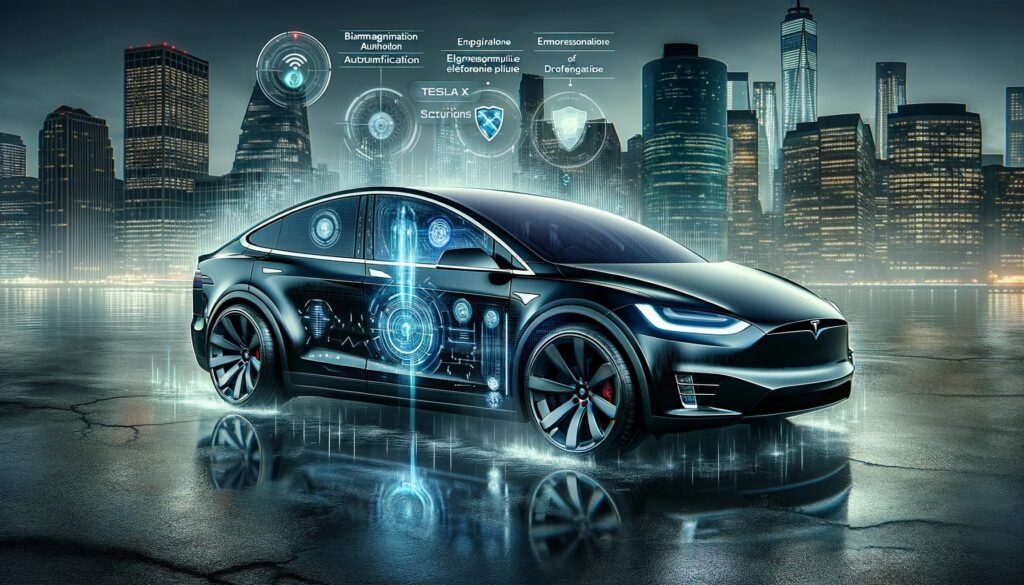In recent years, the surge in popularity of electric vehicles (EVs) has reshaped the automotive industry. As more drivers transition to electric cars, the need for convenient and efficient charging solutions has become paramount. One of the most convenient options for EV owners is installing a home charging station. In this comprehensive guide, we’ll explore everything you need to know about installing electric car charging stations, from understanding the basics to planning for the future.
| Section | Subsection | Key Points |
|---|---|---|
| Types of EV Charging Stations | Level 1, 2, 3 | Different levels of charging, functionality, and compatibility with various electric vehicles. |
| Choosing the Right Charger | Factors to Consider | Charging speed, vehicle compatibility, budget, and available space for installation. |
| Installation Process | Steps and Safety | Detailed steps for installation, when to seek professional help, and safety measures to follow. |
| Costs and Incentives | Financial Aspects | Breakdown of costs for different types of chargers, information on rebates, tax credits, and government incentives. |
| Final Overview | Empowering EV Owners | Summary emphasizing how the guide provides knowledge for making informed decisions regarding the installation of EV charging stations at home. |
Understanding the Surge in Electric Vehicle Popularity
Environmental Sustainability
One of the primary drivers behind the surge in electric vehicle (EV) popularity is growing concerns about environmental sustainability. Traditional internal combustion engine vehicles contribute significantly to air pollution and greenhouse gas emissions, which are major contributors to climate change. EVs produce zero tailpipe emissions, helping to reduce air pollution and combat climate change. This aspect of EVs appeals to environmentally-conscious consumers who are looking for cleaner transportation options.
Push Towards Renewable Energy
Another factor contributing to the rise of EVs is the global push towards renewable energy sources. As countries aim to reduce their reliance on fossil fuels and transition to cleaner energy sources, the adoption of electric vehicles aligns with this goal. EVs can be charged using electricity generated from renewable sources such as solar, wind, and hydroelectric power, further reducing their environmental impact. This synergy between EVs and renewable energy is driving the transition towards a more sustainable transportation system.
Technological Advancements
Advancements in battery technology have played a significant role in making EVs more attractive to consumers. Over the years, there have been significant improvements in battery energy density, resulting in batteries that can store more energy and provide longer driving ranges. Additionally, advancements in charging infrastructure and technology have led to faster charging times, addressing one of the key concerns of potential EV buyers – range anxiety.
Government Incentives and Policies
Many governments around the world are offering incentives and implementing policies to encourage the adoption of electric vehicles. These incentives may include tax credits, rebates, and subsidies for purchasing EVs, as well as incentives for installing charging infrastructure. Additionally, governments are implementing regulations to reduce emissions from vehicles, such as stricter fuel efficiency standards and emissions targets, which further incentivize the transition to electric vehicles.
Consumer Demand and Market Trends
As awareness of environmental issues grows and consumers become more informed about the benefits of electric vehicles, there has been a shift in consumer preferences towards EVs. In addition to environmental considerations, factors such as lower operating costs, reduced maintenance requirements, and the availability of a wide range of EV models have contributed to increasing consumer interest in electric vehicles. As a result, automakers are investing heavily in electric vehicle development and expanding their EV offerings to meet growing demand.
The Importance of Having a Home Charging Station
Owning a home charging station is paramount for electric vehicle (EV) owners, offering a multitude of benefits that enhance convenience, efficiency, and cost-effectiveness.
Convenience and Accessibility
A home charging station provides the unparalleled convenience of charging your EV overnight, right in the comfort of your own home. This means you can start each day with a fully charged battery, ensuring your vehicle is always ready for your daily commute or any unexpected trips. Unlike relying solely on public charging infrastructure, which may be limited or unavailable in certain areas, a home charging station offers unmatched accessibility and reliability.
Cost Savings
Investing in a home charging station can lead to significant cost savings in the long run. While public charging stations often come with usage fees or subscription costs, charging at home typically incurs lower electricity rates, resulting in reduced charging costs over time. Moreover, by eliminating the need to rely on public charging infrastructure, you can avoid potential expenses associated with parking fees or premium charging rates during peak hours.
Time Efficiency
With a home charging station, you have the flexibility to charge your EV at any time that suits your schedule, without having to wait in line or compete for charging spots at public stations. This saves valuable time that would otherwise be spent driving to and from charging locations or waiting for your turn to charge. Additionally, the convenience of overnight charging means you can take advantage of off-peak electricity rates, further optimizing cost savings and energy efficiency.
Environmental Impact
By charging your EV at home, you have the opportunity to power your vehicle with renewable energy sources such as solar or wind power. Installing solar panels or purchasing renewable energy credits allows you to minimize your carbon footprint and contribute to a cleaner, more sustainable environment. This aligns with the overarching goal of reducing greenhouse gas emissions and combating climate change, making home charging stations an environmentally conscious choice for EV owners.
Read More :
Electrify Your Commute: The Definitive Guide to Electric Cars for Long Journeys
The Basics of Electric Car Charging
Electric car charging is a fundamental aspect of owning an electric vehicle (EV), encompassing different charger types and charging standards to ensure efficient and compatible charging experiences.
Types of Electric Car Chargers
Electric car chargers are categorized into three main types:
1. Level 1 Chargers
Level 1 chargers are the most basic type of charger and typically use a standard household outlet (120 volts AC) to deliver power to the vehicle’s battery. While convenient for occasional or emergency charging, Level 1 chargers provide slow charging speeds, making them best suited for overnight charging at home.
2. Level 2 Chargers
Level 2 chargers require a dedicated charging station and use a higher voltage (240 volts AC) to deliver faster charging speeds compared to Level 1 chargers. These chargers are commonly found in residential settings, workplaces, and public charging stations, offering a convenient and efficient charging solution for EV owners.
3. DC Fast Charging
DC Fast Charging, also known as Level 3 charging, utilizes direct current (DC) to deliver rapid charging speeds, significantly reducing charging times compared to Level 1 and Level 2 chargers. These chargers are typically found at public charging stations along highways and major routes, making them ideal for long-distance travel and quick charging stops.
Understanding Electric Car Charging Standards
Electric car manufacturers adhere to various charging standards to ensure compatibility between charging stations and EVs. Some of the most common charging standards include:
1. CHAdeMO
CHAdeMO is a fast charging standard developed by Japanese companies, primarily used by Nissan and Mitsubishi electric vehicles. It utilizes a unique connector and protocol to enable rapid DC charging, offering compatibility with CHAdeMO-equipped charging stations worldwide.
2. CCS (Combined Charging System)
CCS is a fast charging standard adopted by European and North American automakers, offering compatibility with both AC and DC charging. CCS connectors feature two additional pins for DC charging, allowing for high-speed charging at CCS-equipped charging stations.
3. Tesla Supercharger
Tesla Supercharger is a proprietary charging standard developed by Tesla for its electric vehicles. Tesla Superchargers deliver high-speed DC charging exclusively to Tesla vehicles, enabling rapid charging and long-distance travel through Tesla’s extensive Supercharger network.
Understanding these charging standards is crucial for EV owners to ensure seamless charging experiences and compatibility when selecting charging stations for their vehicles. By choosing the appropriate charger type and adhering to the relevant charging standards, EV owners can optimize charging efficiency and convenience, whether at home or on the road.
Assessing Your Charging Needs
Before proceeding with the installation of an electric car charging station, it’s crucial to evaluate your specific charging requirements. This assessment should take into account various factors that influence the charging process, ensuring that you select the most suitable charger for your needs.
Vehicle Type
The type of electric vehicle you own plays a significant role in determining your charging needs. Different EV models come with varying battery sizes and charging capabilities, which directly impact charging time and frequency. Assessing your vehicle’s battery capacity and charging compatibility is essential for selecting a charger that meets your requirements.
Daily Driving Patterns
Understanding your daily driving patterns is crucial for determining your charging needs. Consider factors such as your typical driving distance, frequency of use, and charging habits. For example, if you have a long daily commute or frequently use your vehicle for extended trips, you may require a charging station with faster charging speeds to ensure your vehicle remains adequately charged at all times.
Battery Size
The size of your vehicle’s battery directly affects its charging requirements. Larger battery capacities may necessitate faster charging speeds or higher-capacity chargers to replenish the battery efficiently. Conversely, vehicles with smaller batteries may be adequately served by slower charging options. Assessing your vehicle’s battery size allows you to choose a charger that can effectively meet your charging needs without overcomplicating the installation process.
Charging Speed
Charging speed refers to the rate at which an electric vehicle’s battery can be replenished with electrical energy. Assessing your desired charging speed involves considering factors such as charging time constraints, convenience, and the availability of charging infrastructure. Faster charging speeds may be desirable for minimizing charging downtime, especially for EV owners with busy schedules or long-distance travel requirements.
Frequency of Use
The frequency with which you use your electric vehicle influences your charging needs. Determine how often you anticipate needing to charge your vehicle and factor this into your charging station selection. For example, if you primarily use your EV for short daily trips and have access to overnight charging at home, you may not require a high-speed charging station. Conversely, frequent long-distance travel may necessitate a faster charging solution to minimize charging stops and downtime.
Maintaining Your Electric Car Battery Life
By carefully assessing your charging needs based on factors such as vehicle type, daily driving patterns, battery size, charging speed, and frequency of use, you can make an informed decision when selecting an electric car charging station. This ensures that you choose a charger that aligns with your specific requirements and provides a reliable and efficient charging solution for your electric vehicle.
Planning the Installation
Before installing an electric car charging station, thorough planning is essential to ensure a safe, convenient, and compliant installation process. This includes selecting the optimal location for the charging station and understanding and complying with local regulations and permits.
Selecting the Optimal Location
Choosing the right location for your charging station is critical for convenience, accessibility, and safety. Consider the following factors when determining the optimal location:
Proximity to Parking Spot
Select a location that is close to your vehicle parking spot to minimize cable length and maximize convenience. Ideally, the charging station should be within reach of your vehicle’s charging port without requiring excessive maneuvering or cable extension.
Access to Electrical Outlets
Ensure the chosen location has access to electrical outlets or wiring capable of supporting the charging station’s power requirements. If installing an outdoor charging station, consider the availability of dedicated circuits or electrical panels to accommodate the charging infrastructure.
Weather Protection
Choose a location that provides adequate weather protection for the charging station, especially if installing it outdoors. Sheltered areas or locations shielded from rain, snow, and direct sunlight can help prolong the lifespan of the charging equipment and ensure reliable performance in all weather conditions.
Understanding Local Regulations and Permits
Before proceeding with the installation, familiarize yourself with local regulations and obtain any necessary permits to ensure compliance with building codes and zoning laws. Consider the following steps:
Research Local Regulations
Check with your local municipality or regulatory authority to understand specific requirements and regulations governing the installation of electric car charging stations. This may include building codes, zoning ordinances, and electrical regulations applicable to your area.
Obtain Necessary Permits
Obtain any required permits or approvals before installing the charging station to ensure legal compliance and avoid potential fines or penalties. Depending on your location, permits may be required for electrical work, construction, or alterations to your property.
Compliance with Building Codes
Ensure that the installation of the charging station complies with relevant building codes and standards, including electrical codes and safety regulations. Adhering to these codes helps ensure the safety and integrity of the charging infrastructure and reduces the risk of electrical hazards or malfunctions.
Electrical Considerations
When installing an electric car charging station at home, it’s essential to consider electrical factors to ensure safety and compatibility with your home’s electrical system.
Upgrading Your Home’s Electrical System
Assessing Electrical Capacity
Installing a Level 2 charging station may require upgrading your home’s electrical system to accommodate higher voltage and amperage requirements. Before proceeding with installation, consult with a licensed electrician to assess your home’s electrical capacity and determine if any upgrades are necessary.
Capacity Requirements
Level 2 chargers typically require a dedicated circuit with higher voltage (240 volts) and amperage (e.g., 40 amps) than standard household outlets. Upgrading your electrical system may involve installing a new circuit breaker, wiring, and possibly upgrading your electrical panel to handle the increased load.
Professional Guidance
Seeking professional guidance from a licensed electrician is crucial during the assessment and upgrade process. An electrician can evaluate your electrical system’s capacity, recommend appropriate upgrades, and ensure compliance with electrical codes and safety standards.
Safety Measures and Precautions
Electrical Safety Procedures
Prioritize safety throughout the installation process by following proper electrical safety procedures:
- Shutting Off Power: Always shut off power to the electrical circuit before performing any installation or wiring work. Use a circuit breaker or fuse to disconnect power and prevent electrical shock hazards.
- Using Insulated Tools: Use insulated tools and equipment when handling electrical components to minimize the risk of electrical shock. Avoid using damaged or worn-out tools that could compromise safety.
- Securing Wiring: Ensure all wiring is properly secured and protected to prevent damage or hazards. Use conduit or cable trays to organize and shield wiring from physical damage and environmental factors.
Compliance with Electrical Codes
Adhere to electrical codes and regulations applicable to charging station installations in your area. Compliance with codes ensures the safety and integrity of the electrical system and reduces the risk of hazards or malfunctions.
Professional Installation
Consider hiring a professional electrician to install the charging station, especially if upgrades to your home’s electrical system are required. Professional installation ensures proper wiring, compliance with codes, and adherence to safety standards, minimizing the risk of electrical hazards.
By addressing electrical considerations such as assessing your home’s electrical capacity, making necessary upgrades, and prioritizing safety measures during installation, you can ensure a safe and reliable charging experience for your electric vehicle. Collaborating with a licensed electrician and following proper safety procedures are essential steps in achieving a successful charging station installation.
Costs and Incentives
When considering the installation of a home charging station for your electric vehicle, it’s essential to understand the associated costs and available incentives to make an informed decision.
Breaking Down the Cost of Installation
Equipment Costs
The cost of purchasing a home charging station varies depending on factors such as brand, features, and charging speed. Basic Level 1 chargers are typically more affordable, while Level 2 chargers with advanced features may come at a higher price point.
Installation Labor
Factor in the cost of hiring a licensed electrician to install the charging station. Installation labor costs vary depending on the complexity of the installation, accessibility of electrical wiring, and local labor rates. DIY installation may reduce labor costs but requires technical expertise and safety precautions.
Electrical Upgrades
If your home’s electrical system requires upgrades to support the charging station’s power requirements, budget for additional expenses such as circuit installation, wiring upgrades, and electrical panel modifications. Consulting with an electrician can help determine the extent of necessary upgrades and associated costs.
Long-Term Savings
While the upfront cost of installing a home charging station may seem significant, consider the long-term savings on fuel and maintenance costs associated with electric vehicles. Charging at home typically costs less than refueling with gasoline, resulting in savings over time and reducing overall ownership costs.
Available Government Incentives and Rebates
Financial Assistance
Many governments offer incentives and rebates to promote the adoption of electric vehicles and charging infrastructure. These incentives may include tax credits, rebates, grants, or subsidies for purchasing and installing charging stations. Check with local authorities or government agencies to determine eligibility and application procedures for financial assistance programs.
Tax Credits
Some regions offer tax credits or deductions for expenses related to electric vehicle charging infrastructure, including installation costs and equipment purchases. These tax incentives can help offset the upfront costs of installing a home charging station, making electric vehicle ownership more affordable for consumers.
Utility Rebates
Utility companies may offer rebates or incentives for installing electric vehicle charging infrastructure at home. These incentives may take the form of reduced electricity rates, cash rebates, or credits on utility bills. Contact your utility provider to inquire about available programs and eligibility requirements.
By understanding the breakdown of installation costs, including equipment, labor, and potential electrical upgrades, and exploring available government incentives and rebates, you can make a well-informed decision about installing a home charging station for your electric vehicle. Taking advantage of financial assistance programs can help offset upfront costs and make electric vehicle ownership more accessible and affordable for consumers.
Maintenance and Troubleshooting
Maintaining your electric car charging station is essential for ensuring reliable performance and prolonging its lifespan. Regular maintenance and prompt troubleshooting of common issues can help maximize charging efficiency and minimize downtime.
Routine Maintenance Tips
Inspect and Clean Regularly
Regularly inspect your charging station for any signs of wear, damage, or corrosion. Clean the charging connectors and surrounding area to remove dirt, debris, or contaminants that may affect charging performance.
Follow Manufacturer Recommendations
Follow manufacturer recommendations for routine maintenance intervals and procedures. This may include lubricating moving parts, tightening connections, and performing diagnostic checks to ensure proper operation.
Check Charging Cable
Inspect the charging cable for any signs of fraying, cracking, or damage. Replace the cable if any abnormalities are detected to prevent safety hazards and ensure reliable charging connections.
Common Issues and Troubleshooting
Faulty Connections
If the charging station fails to establish a connection with your vehicle, check for loose or corroded connections at the charging port and charging cable. Ensure the charging cable is securely plugged into both the vehicle and the charging station.
Software Glitches
If the charging station displays error codes or malfunctions, try resetting the station by disconnecting power and rebooting the system. Check for software updates or firmware upgrades provided by the manufacturer to address known issues or improve performance.
Power Fluctuations
Fluctuations in power supply or voltage can affect charging station operation. Ensure the charging station is connected to a stable power source and consider installing surge protection devices or voltage stabilizers to mitigate power fluctuations.
Seeking Professional Assistance
If troubleshooting efforts fail to resolve charging station issues or if you encounter complex technical problems, seek assistance from a qualified technician or electrician. Contact the manufacturer’s customer support service for guidance and support in diagnosing and resolving charging station issues.
Smart Charging Stations: The Future of EV Charging
Smart charging stations represent the next evolution in electric vehicle (EV) charging technology, offering advanced features and capabilities that enhance efficiency, convenience, and grid integration.
Exploring Smart Features
Scheduling
Smart charging stations allow users to schedule charging sessions according to their preferences and electricity rates. By programming charging times during off-peak hours, users can take advantage of lower electricity rates and minimize strain on the grid during peak demand periods.
Remote Monitoring
Remote monitoring capabilities enable users to monitor charging status, energy consumption, and charging history from anywhere using a mobile app or web interface. This real-time visibility allows users to track charging progress, receive notifications, and manage charging sessions remotely.
Energy Management
Smart charging stations incorporate energy management features that optimize charging efficiency and minimize energy waste. These features may include load balancing, dynamic power adjustment, and smart grid integration, allowing charging stations to adjust power consumption based on grid conditions and user preferences.
Integration with Home Automation Systems
Smart charging stations can integrate seamlessly with home automation systems, enabling users to control charging operations through voice commands, smart home devices, or programmable schedules. This integration enhances user convenience and enables smart charging stations to function as part of a holistic home energy management system.
The Role of Smart Charging in Grid Management
Balancing Electricity Demand
Smart charging technology plays a crucial role in balancing electricity demand and grid stability by optimizing charging schedules and reducing peak demand. By scheduling charging sessions during off-peak hours when electricity demand is lower, smart chargers help alleviate strain on the grid and minimize the need for costly infrastructure upgrades.
Grid Stability
Smart charging stations contribute to grid stability by adjusting charging power based on grid conditions and available capacity. By dynamically managing power consumption and responding to grid signals, smart chargers help maintain grid stability and prevent disruptions caused by sudden spikes in demand.
Demand Response
Smart charging stations enable demand response capabilities, allowing users to participate in utility programs that incentivize load shifting and demand reduction. By participating in demand response initiatives, users can receive financial incentives or credits for adjusting their charging behavior to support grid reliability and stability.
Environmental Impact and Sustainability
Electric vehicles (EVs) play a pivotal role in mitigating environmental impact and promoting sustainability through reduced greenhouse gas emissions and reliance on fossil fuels. By harnessing renewable energy sources and adopting solar-powered charging stations, EV owners can further enhance the environmental benefits of electric transportation.
The Environmental Benefits of Electric Vehicles
Greenhouse Gas Emissions Reduction
Switching to electric vehicles significantly reduces greenhouse gas emissions compared to traditional internal combustion engine vehicles. EVs produce zero tailpipe emissions during operation, helping to mitigate climate change and improve air quality in urban areas.
Air Pollution Reduction
Electric vehicles contribute to cleaner air by eliminating harmful pollutants such as nitrogen oxides (NOx), particulate matter (PM), and volatile organic compounds (VOCs) associated with combustion engine vehicles. This reduction in air pollution has significant health benefits and improves overall environmental quality.
Renewable Energy Integration
Charging electric vehicles with renewable energy sources such as solar, wind, or hydropower further enhances their environmental sustainability. By utilizing clean energy sources for charging, EV owners can minimize their carbon footprint and reduce reliance on fossil fuels for transportation.
Solar-Powered Charging Stations
Harnessing Solar Energy
Solar-powered charging stations utilize photovoltaic panels to convert sunlight into electricity, providing a sustainable and renewable energy source for charging electric vehicles. These stations offer off-grid charging capabilities and promote the adoption of clean energy technologies.
Off-Grid Charging
Solar-powered charging stations are ideal for remote locations or areas with limited access to grid electricity. By generating electricity onsite, these stations enable off-grid charging solutions that support sustainable transportation initiatives and reduce reliance on centralized power infrastructure.
Environmental Benefits
Solar-powered charging stations offer environmental benefits such as reduced carbon emissions, decreased air pollution, and conservation of natural resources. By harnessing solar energy for transportation, EV owners can minimize their environmental impact and contribute to a cleaner, greener future.
Integrating with Home Energy Systems
Integrating electric car charging stations with home energy systems offers enhanced energy efficiency, grid independence, and convenience for electric vehicle (EV) owners. By leveraging solar panels, battery storage, and smart home automation, users can optimize energy usage and reduce reliance on the grid while maximizing the benefits of renewable energy sources.
Interaction with Solar Panels and Battery Storage
Maximizing Energy Efficiency
Integrating a charging station with home solar panels allows EV owners to maximize energy efficiency by harnessing clean, renewable solar energy for vehicle charging. During periods of peak sunlight, excess solar energy can be diverted to charge the EV battery directly or stored in a home battery storage system for later use.
Reducing Grid Reliance
By utilizing solar energy for vehicle charging, EV owners can reduce their reliance on the grid and minimize electricity costs associated with traditional grid-based charging. This grid independence enhances energy resilience and reduces the environmental impact of transportation by utilizing renewable energy sources.
Optimal Charging During Sunlight Hours
Integrating a charging station with solar panels enables users to schedule charging sessions during peak sunlight hours, when solar energy production is highest. This ensures optimal utilization of solar energy resources and maximizes the efficiency of the charging process.
Smart Home Integration
Energy Optimization
Connecting a charging station to a smart home automation system allows for seamless integration with other household devices and appliances. Smart algorithms can optimize energy usage by coordinating charging schedules with solar production, battery storage levels, and household energy consumption patterns.
Remote Monitoring and Control
Smart home integration enables users to monitor charging status, energy consumption, and battery levels remotely using a mobile app or web interface. Real-time alerts and notifications provide updates on charging progress and notify users of any maintenance issues or anomalies.
Enhanced Convenience
By automating charging schedules and optimizing energy usage, smart home integration enhances user convenience and simplifies the management of electric vehicle charging. Users can remotely control charging sessions, adjust settings, and receive insights into energy usage patterns to optimize efficiency.
Preparing for the Future: Upgrades and Scalability
As electric vehicle (EV) technology advances and evolves, it’s essential to plan for future upgrades and scalability of your charging infrastructure. By anticipating future EV purchases and staying informed about advancements in charging technology, you can ensure that your charging station remains compatible, efficient, and future-proof.
Planning for Future EV Purchases
Compatibility Considerations
When selecting a charging station, consider compatibility with a wide range of electric vehicle models, including current and future releases. Choose a charging station that supports multiple charging standards and connectors to accommodate different vehicle types and charging requirements.
Scalability Options
Opt for a charging station that offers scalability and flexibility to adapt to changing needs and technological advancements. Look for features such as modular design, upgradeable firmware, and expandable charging capabilities to future-proof your charging infrastructure and accommodate future EV purchases.
Consultation with Experts
Consult with EV charging experts or electricians to assess your current charging needs and plan for future upgrades. Discuss potential expansion options, compatibility considerations, and technological advancements to ensure that your charging infrastructure remains viable and efficient in the long term.
Advancements in EV Charging Technology
Faster Charging Speeds
Stay informed about advancements in EV charging technology, such as faster charging speeds and higher power outputs. Anticipate future EV models with larger battery capacities and faster charging capabilities, and ensure that your charging station can accommodate these advancements.
Wireless Charging
Explore emerging technologies such as wireless charging, which eliminates the need for physical cables and connectors. Stay updated on developments in wireless charging standards and compatibility requirements to prepare for future adoption and integration into your charging infrastructure.
Bidirectional Power Flow
Consider advancements in bidirectional charging technology, which enables EV batteries to discharge energy back to the grid or power other devices. Anticipate future applications of bidirectional power flow in vehicle-to-grid (V2G) systems and energy storage solutions, and ensure that your charging station supports these capabilities.
Conclusion
By planning for future EV purchases, staying informed about advancements in EV charging technology, and selecting a charging station with scalability and flexibility, you can prepare your charging infrastructure for the future. Anticipate compatibility requirements, explore emerging technologies, and consult with experts to ensure that your charging station remains efficient, reliable, and future-proof in the evolving landscape of electric transportation. Prioritize scalability, adaptability, and technological readiness to maximize the longevity and effectiveness of your charging infrastructure for years to come.
Safety First: Adhering to Codes and Standards
Ensuring safety is paramount when installing electric vehicle (EV) charging stations, and adherence to codes and standards is essential to minimize the risk of electrical hazards. By understanding and complying with regulations such as the National Electrical Code (NEC) and prioritizing UL certification, EV owners can ensure safe and reliable charging experiences.
Understanding NEC Requirements
Safety Standards
The National Electrical Code (NEC) establishes safety standards for electrical installations, including EV charging stations. Familiarize yourself with NEC requirements to ensure compliance with regulations related to wiring, grounding, and electrical safety measures.
Installation Guidelines
NEC guidelines address various aspects of EV charging station installation, including proper wiring methods, circuit protection, and equipment grounding. Follow NEC requirements to mitigate the risk of electrical shocks, fires, and other safety hazards associated with charging station installations.
Permitting and Inspection
Obtain necessary permits and schedule inspections from local authorities to ensure compliance with NEC regulations. Proper permitting and inspection procedures help verify that EV charging installations meet safety standards and adhere to applicable building codes and regulations.
Importance of UL Certification
Rigorous Testing
UL certification indicates that a charging station has undergone rigorous testing and evaluation to verify compliance with safety and performance standards established by Underwriters Laboratories (UL). Look for UL-certified charging stations to ensure reliability, safety, and compliance with industry standards.
Product Reliability
UL-certified products undergo comprehensive testing to assess factors such as electrical safety, durability, and performance under various conditions. Choosing UL-certified charging stations provides assurance of product reliability and reduces the risk of malfunctions or safety hazards during use.
User Confidence
UL certification instills confidence in consumers by demonstrating that a charging station meets stringent safety and quality standards. By selecting UL-certified products, EV owners can trust that their charging infrastructure is designed and manufactured to the highest safety standards.
Conclusion
Prioritizing safety by adhering to codes and standards such as the National Electrical Code (NEC) and selecting UL-certified charging stations is essential for ensuring safe and reliable electric vehicle charging experiences. By following NEC requirements, obtaining necessary permits, and choosing UL-certified products, EV owners can mitigate the risk of electrical hazards and enjoy peace of mind knowing that their charging infrastructure meets industry safety standards. Safety should always be the top priority when installing and operating EV charging stations, and adherence to codes and standards plays a crucial role in achieving this goal.
Wireless Charging: A Peek into the Future
Wireless charging technology represents a significant advancement in electric vehicle (EV) charging infrastructure, offering a convenient and seamless charging experience without the need for physical cables. By exploring wireless EV charging and examining its prospects and challenges, we can gain insight into the future of electric transportation.
Exploring Wireless EV Charging
Convenient Charging Experience
Wireless charging eliminates the hassle of plugging in cables, offering a streamlined and user-friendly charging process for EV owners. Inductive charging pads installed in parking spaces transmit power to EVs through electromagnetic fields, allowing for effortless charging without the need for direct physical contact.
Simplified Infrastructure
Wireless charging technology simplifies EV charging infrastructure by eliminating the need for dedicated charging stations with physical connectors. Instead, charging pads can be integrated into existing infrastructure such as parking lots, streets, or garages, offering flexibility and convenience for EV users.
Prospects and Challenges
Efficiency
Efficiency is a key consideration for wireless charging technology, as energy loss during transmission can affect charging speed and effectiveness. Continued advancements in wireless charging systems aim to improve efficiency and minimize energy loss, ensuring optimal charging performance for EVs.
Cost
Cost remains a significant challenge for widespread adoption of wireless charging technology, as infrastructure installation and equipment costs may be higher compared to traditional wired charging solutions. However, as technology advances and economies of scale are realized, the cost of wireless charging is expected to decrease over time.
Interoperability
Interoperability is another challenge for wireless charging, as different manufacturers may use proprietary charging standards and protocols. Standardization efforts aim to establish universal wireless charging standards to ensure compatibility and interoperability across different EV models and charging infrastructure.
Community Charging Solutions
Community charging solutions play a vital role in expanding electric vehicle (EV) adoption and supporting sustainable transportation options for residents of multi-unit dwellings, such as condominiums and apartments. By exploring the installation of charging stations in these communities and considering the balance between public and private charging infrastructure, we can promote EV accessibility and environmental stewardship in urban environments.
Installing Charging Stations in Condominiums and Apartments
Access for Residents
Community charging solutions provide EV access for residents who may not have access to private charging infrastructure, such as home garages or driveways. Installing charging stations in condominiums and apartments ensures that EV owners have convenient access to charging facilities, supporting the transition to electric transportation.
Promoting EV Adoption
Shared charging facilities encourage EV adoption by eliminating barriers to access and providing convenient charging options for residents living in multi-unit dwellings. By facilitating EV ownership and usage, community charging solutions contribute to reducing greenhouse gas emissions and promoting sustainable transportation practices in urban areas.
Public vs. Private Charging Stations
Public Charging Stations
Public charging stations offer convenience and accessibility for EV owners on the go, providing charging options at locations such as shopping centers, workplaces, and public parking facilities. These stations serve as valuable infrastructure for EV users who require charging while away from home or on longer journeys.
Private Charging Stations
Private charging stations provide dedicated charging infrastructure for residents and employees of multi-unit dwellings, ensuring reliable access to charging facilities within the community. While private stations offer the convenience of exclusive access, they also require investment in infrastructure, management, and maintenance.
Balancing Accessibility and Cost
Balancing the benefits of public accessibility with the cost and management of private infrastructure is essential for sustainable community charging solutions. Community stakeholders must consider factors such as usage demand, cost-sharing mechanisms, and infrastructure scalability to optimize the balance between public and private charging infrastructure.
Conclusion
In conclusion, installing an electric car charging station at home offers numerous benefits, ranging from convenience and cost savings to environmental sustainability. By familiarizing yourself with the basics of EV charging, assessing your specific needs, and planning for the future, you can power up your ride and embrace the transition to electric mobility with confidence.
Understanding the various types of electric car chargers, assessing your charging requirements, and selecting the optimal location for installation are crucial steps in the process. Additionally, considering factors such as local regulations, permits, and electrical considerations ensures a safe and compliant installation process.
Choosing the right charging station, considering features such as speed, compatibility, and smart capabilities, is essential for meeting your current needs while allowing for future expansion. Moreover, understanding the costs involved and exploring available government incentives and rebates can help offset installation expenses and make electric car ownership more accessible.
Maintenance and troubleshooting are also key aspects of owning a charging station, requiring routine inspection and proactive measures to ensure optimal performance and reliability. Exploring future technologies such as smart charging and wireless charging offers a glimpse into the evolving landscape of EV charging infrastructure.
By embracing electric mobility and investing in a home charging station, you contribute to a cleaner environment, reduce dependence on fossil fuels, and pave the way for a more sustainable future. With careful planning and consideration, you can power up your ride with confidence and embark on a journey towards greener transportation options.
FAQ Section
What Is the Difference Between Level 1, Level 2, and DC Fast Charging?
- Level 1 Chargers: Utilize standard household outlets and offer slow charging speeds suitable for overnight charging.
- Level 2 Chargers: Require dedicated circuits and provide faster charging compared to Level 1 chargers.
- DC Fast Charging: Delivers rapid charging for EVs equipped with compatible hardware, significantly reducing charging times.
Can I Install an Electric Car Charging Station Myself?
While some homeowners may opt for DIY installation, hiring a professional electrician is recommended for safe and compliant installation. Licensed electricians possess the expertise to handle electrical wiring and ensure proper installation.
How Long Does It Take to Charge an Electric Car at Home?
Charging times vary based on factors such as battery size, charger type, and electrical capacity. Level 1 chargers may take several hours to fully charge an EV, while Level 2 chargers offer faster charging rates, replenishing the battery more quickly.
What Are the Running Costs of a Home Electric Car Charging Station?
Running costs include electricity consumption, maintenance, and any associated fees for network access or subscription services. However, overall costs are typically lower than refueling a conventional gasoline vehicle.
Is It Safe to Charge an Electric Car in the Rain?
Modern electric car charging stations are designed to withstand various weather conditions, including rain and snow. However, it’s crucial to follow safety precautions and ensure that electrical components are adequately protected from moisture.
Can I Upgrade My Charging Station in the Future?
Yes, many charging stations offer upgrade options such as faster charging speeds or enhanced connectivity features. Homeowners can explore upgrade possibilities by consulting with the manufacturer or a qualified electrician to adapt to evolving needs and technologies.

